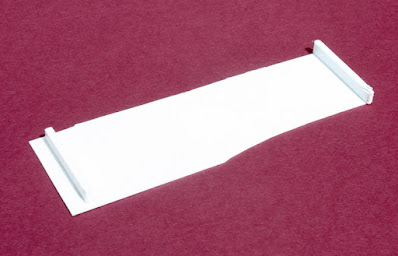This year the annual ProRail event (Prototype Railroad Operations) was held in the Minneapolis area, and was well organized and managed by Rich Remiarz and Joe Binish. Despite some last-minute crises such as layout owners having to back out for medical reasons, substitutes were found, and everything ran pretty smoothly. By Sunday’s last layouts, many people were mentioning how much they had enjoyed an excellent week.
I participated in seven operating sessions, a full but fun program. Below I’ll make brief remarks about each layout, simply in chronological order as I worked on them. Of course a photo or two can’t do justice to large and complex layouts, so I am just offering some flavor.
The first layout I operated on was Dave Zuhn’s State Belt, the waterfront railroad in San Francisco. Though the layout is very much still a-building, Dave’s progress gave us a very nice session. I liked several of the things he is doing with the challenge of railroading that is not just urban but right downtown.
One idea he is using well is to represent the large buildings (many of which still stand today), with black boxes, effectively giving you the perspective and challenge of street switching. These could always be replaced someday with accurate structures. Below is my conductor on the north end of the railroad, Jim Providenza, reviewing the paperwork.
The second layout of the day was that of Randy Nord, who has a truly large railroad under construction. Parts of it are already very impressive, such as the Milwaukee Road depot and coach yard you see here. In the background is some of the mushroom construction underway.
In the evening, we visited old friend Bill Jolitz, for one more experience on the San Joaquin Short Line and its famous (or infamous) Cojones Local. This time, I drew the Aurora Local, also a job requiring careful planning, with lots of reefers and other cars to switch.
The next day I greatly enjoyed a return visit to Rich Remiarz’ Great Northern layout. It has much excellent scenery and really outstanding rolling stock. I drew the St. Cloud switch job, which was a challenge but a lot of fun. Below is the view from my operating area, showing Rich himself at left, talking to Henry Freeman, east end switch crew.
On Friday I operated at Jeff Otto’s immense Missabe Northern layout (DM&IR plus Great Northern and Northern Pacific), with heavy ore operations, including a full and busy Proctor Yard, several mines, and two impressive ore docks (each with an ore boat being loaded), which I show below. This is a dauntingly large railroad, but with a lot of fun jobs, and operation is obviously well thought out. I liked it a lot, and came by on Sunday morning for an additional half session before departing for the airport.
Saturday I visited one of my favorite layouts, Joe Binish’s Central of Minnesota (which is kind of the M & StL in disguise). I drew the 4th Street switch job, challenging in tight quarters and with lots of freight cars on hand. Talk about requiring planning! But it was really fun. Below you see a view down the 4th Street trackage, with Bill Sornsin at right (who was working in the yard, out of view at right),
This was an excellent ProRail,with not only outstanding layouts but good organization so everything ran smoothly. These are usually great events, and I’d say this one was no exception.
Tony Thompson
















































